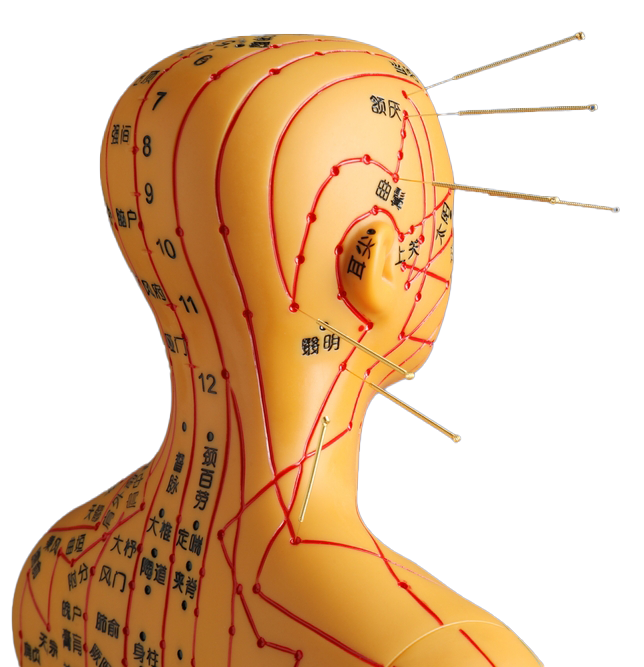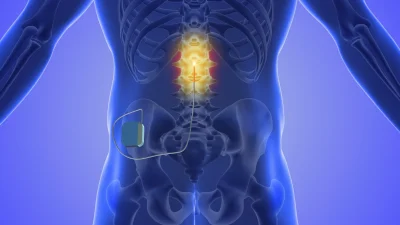- Facet joint Radiofrequency Thermocoagulation (RFT) Treatment
- Radiofrequency Thermocoagulation Dorsal root ganglion (DRG) radiofrequency thermocoagulation (RFT)
- Discitis Procedure
- Sacroiliac Joint Radiofrequency Treatment (Simplicity)
- In-Disc Ozone Therapy
- Nucleoplasty
- Transforaminal Injection (Pinpoint)
- Facet joint block
- Epidural Injection
Radiofrequency ablation
- Home
- Advanced Treatments
- Radiofrequency ablation
Contents
Toggle- Creating an individualised treatment plan
- The role of different specialities (physiotherapist, orthopaedist, psychologist, neurosurgeon)
- Pain treatment during pregnancy
- Treatment of chronic pain in the elderly
- Pain management in children
- Stress management
- Healthy eating
- Ergonomic living arrangements
- Exercise and mobility
- Facet joint Radiofrequency Thermocoagulation (RFT) Treatment
- Radiofrequency Thermocoagulation Dorsal root ganglion (DRG) radiofrequency thermocoagulation (RFT)
- Discitis Procedure
- Sacroiliac Joint Radiofrequency Treatment (Simplicity)
- In-Disc Ozone Therapy
- Nucleoplasty
- Transforaminal Injection (Pinpoint)
- Facet joint block
- Epidural Injection
- Cancer pain
- Permanent Epidural / Spinal Port Application
- Vascular Port (Permanent Vascular Access)
- Trigeminal Nerve RFT
- Blockade of Ganglion Stellatum
- Lumbar Sympathetic Ablation
- Facet joint Radiofrequency Thermocoagulation (RFT) Treatment
- Radiofrequency Thermocoagulation Dorsal root ganglion (DRG) radiofrequency thermocoagulation (RFT)
- Hernia Burning (IDET)
- Discitis Procedure
- Sacroiliac Joint Radiofrequency Treatment (Simplicity)
- Permanent Epidural / Spinal Port - Pump System
- In-Disc Ozone Therapy
- Nucleoplasty
- Peripheral Nerve Block
- Transforaminal Injection (Pinpoint)
- Facet joint block
- Epidural Injection
- Intra-articular Fluid Treatment
- Dorsal root ganglion (DRG) radiofrequency thermocoagulation (RFT)
- Spinal cord stimulation (pain pacemaker)
- Ergonomic living arrangements
- Spinal cord stimulation (pain pacemaker)
- Nucleoplasty
- Radiofrequency ablation
- Herbal solutions
- Dry needle treatment
- Anti-ageing treatments
- Ozone therapy
- Cupping therapy - Cupping
- Mesotherapy
- Prolotherapy
- Acupuncture
- Stem Cell Therapy
- Nerve blockages
- Corticosteroid injections
- Massage and relaxation techniques
- Manual therapy
- Electrotherapy
- Neuropathic pain medications
- Anti-inflammatory drugs
- Muscle relaxants
- Painkillers (paracetamol, ibuprofen, etc.)
Radiofrequency Ablation: Targeted Pain Management and Tissue Therapy
Modern medicine is moving towards increasingly precise and personalised methods of pain management, radiofrequency ablation (RFA) has become one of the prominent techniques in this field. Radiofrequency ablation, which is applied to temporarily or permanently interrupt or control nerve conduction in tissues, is an effective and minimally invasive method that can provide long-term relief by focusing on the root cause of pain. In this article, we will discuss what radiofrequency ablation is, how it works, when it is used and its potential advantages and risks.
1. What is radiofrequency ablation?
Radiofrequency ablation (RFA) is a procedure in which a special needle or catheter is inserted into the target tissue in the body high frequency radio waves is a procedure based on the application of radio waves. These radio waves generate heat energy in the targeted area, destroying or slowing down the function of nerve tissue or other tissue lesions in a controlled manner.
- For Pain Management Purposes: It is often used to stop the transmission of pain in the facet joints of the spine, sacroiliac joints or areas with peripheral nerves.
- Oncological Purposes: Radiofrequency ablation technology is also considered as an effective method in the destruction or reduction of cancerous tissue in some types of tumours.
2. How does it work?
- Goal Setting: The patient is usually assessed using an imaging modality (fluoroscopy, ultrasound or CT). The source of pain or the tissue to be destroyed is located.
- Needle Placement: A specially designed needle, which can pass radiofrequency waves through it, is carefully positioned in the area to be lesioned.
- Radiofrequency Application: When high frequency current is applied, the tissue starts to heat up. The heating reaches a level to disable the nerve fibres that transmit pain (ablation).
- Cooling and Recovery: When the application is over, the area goes into a state of rest for a while. At this stage, the body clears the damaged tissue or does not resume nerve conduction.
Important Note: The goal of RFA may not be to completely destroy the nerve. In some cases, the degree of "lesioning" is adjusted to provide long-term pain relief by partially reducing nerve activity.
3. In which cases is it used?
- Spinal Pain: It is preferred in the treatment of chronic pain of joint or nerve origin, especially in the neck (cervical), back (thoracic) and lumbar (lumbar) regions.
- Facet Joint Pains: Radiofrequency ablation of the facet joints in the spine is commonly used to relieve pain associated with arthritis in these joints.
- Sacroiliac Joint Pain: Pain in the sacroiliac joints in the lower back can be managed with RFA.
- Cancer Tumours: Radiofrequency ablation can be applied as a non-surgical treatment alternative in some organ tumours such as liver, kidney and lung.
- Other Nerve Blockades: Radiofrequency techniques may also be preferred for trigeminal neuralgia or other facial nerve pain.
4. Procedure Process and Preparation
- Evaluation and Planning: For the success of the procedure, it is important to clearly identify the source and anatomical location of the pain. Your doctor will examine the area in detail with imaging methods such as MRI, CT or fluoroscopy.
- Sedation or Local Anaesthesia: RFA is usually a minimally invasive procedure. Local anaesthesia or light sedation may be applied to ensure comfort during needle insertion.
- Needle Placement: The specialist places the needle in the correct position under imaging guidance. The radiofrequency generator is then activated.
- Follow-up of the Transaction: Tissue temperature and lesion formation are usually monitored in real time on the screen of the device. The procedure is terminated when the desired level is reached.
Duration: Depending on the site and the extent of the procedure, the RFA procedure can range from 20-60 minutes.
5. Advantages
- Minimally Invasive Compared to major surgery, it is performed through a small needle entry point and does not require stitches or a long recovery period.
- Long-term Pain Reduction: When successfully administered, a significant reduction in pain intensity can be observed over a period of weeks or months.
- Fast Recovery: Shortly after the procedure, the patient can usually return home and resume light daily activities.
- Can be combined with other methods: More comprehensive results are obtained when used in combination with approaches such as physiotherapy, rehabilitation and drug therapy.
6. Possible Risks and Side Effects
As with any medical intervention, RFA involves some risks:
- Infection: Infection may occur at the needle entry point or in the tissue. Observing sterile conditions reduces this risk.
- Nerve Damage Unintentional damage to surrounding tissue other than the targeted nerve can lead to numbness or loss of strength. This is temporary in most cases, but there is a rare risk of permanent damage.
- Temporary Pain Increase: In the first days after the procedure, there may be a short-term increase in pain at the ablation site.
- Allergic Reactions: Allergy to the drugs used (local anaesthetics, etc.) may rarely be seen.
Before the procedure, sharing your medical history, medications and allergies, if any, with your physician will help minimise these risks.
7. Recovery Process and Next Steps
- Rest and Observation: Immediately after the procedure, you can stay under observation for a certain period of time and then be discharged.
- Return to Daily Activities: Most patients can return to office work or light physical activities within a few days. However, the physician's approval should be awaited for activities such as intense exercises or heavy lifting.
- Physiotherapy / Rehabilitation: Regular exercise, stretching and strengthening exercises can be recommended to increase the effect of RFA.
- Follow-up Appointments: It is worthwhile to schedule periodic check-ups with your doctor to monitor the reduction or renewal of the pain level.
8. Conclusion
Radiofrequency ablation is a less invasive, fast-acting and long-lasting treatment method that can provide long-term relief in the control of chronic pain or certain tumours compared to surgery. When applied with the correct diagnosis, appropriate patient selection and an experienced team of specialists, it can significantly improve the quality of life of patients.
If you have been suffering from back, neck or joint pain for a long time and have not responded to conventional treatment methods (physiotherapy, medication, injections, etc.), radiofrequency ablation is a possible option to consider as a next step. However, it is recommended that you discuss the risks and benefits with a pain (algology) specialist, neurosurgeon or a physician in the relevant field. Remember that every medical procedure is individualised and the best approach is determined by a comprehensive examination and the professional opinion of the physician.
Our treatments
- Home
- Advanced Treatments
- Radiofrequency ablation





